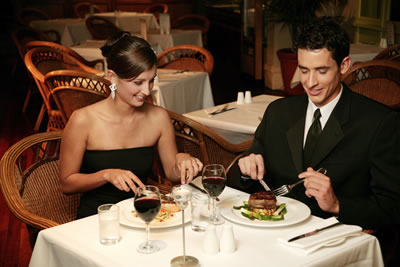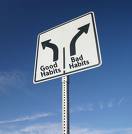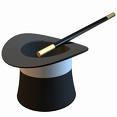Cheat Your Way To Fat Loss
 Can we really indulge in savory, high calorie cheat meals once a week, and still continue to reap the fat loss rewards of flat abs, sexy arms and a nice tight booty? I’m here once again with transformation expert, John Alvino, who is giving us the lowdown on the very best tips and secrets to transform your body fast.
Can we really indulge in savory, high calorie cheat meals once a week, and still continue to reap the fat loss rewards of flat abs, sexy arms and a nice tight booty? I’m here once again with transformation expert, John Alvino, who is giving us the lowdown on the very best tips and secrets to transform your body fast.
If you’re a beginner and thinking about participating in a transformation contest, then you’ll want to go back to part 2 of this interview and read John’s advice on how to start off on the right foot.
So, let’s hear John’s take on cheat meals, shall we….
********************
Craig Ballantyne: Right. And one other thing you talked about there was cheat meals. What are your thoughts on the cheat meal? Is it just one meal? What’s it there for? Is it there for physiological purposes or is it just there for mental purposes? Can you talk about that for a bit John?
John Alvino: Sure. I don’t prescribe cheat meals when people are training for a body building competition and we’re looking to get into the low single digits of body fat percentage relatively quickly.
If you’re taking, for example, a photo shoot and you’re going to lose 20 pounds of fat for a transformation contest or you’re just looking to get in shape for yourself, I find cheat meals are important. More so psychologically than physiologically. It gives you something to look forward to. You don’t feel as deprived and when you cheat, you’re a lot less likely to binge eat.
For example, let’s say a client is married and they go out with their spouse every Saturday night. Saturday night would be a great  opportunity to have a cheat meal. I tell them that this is your meal to enjoy, if you want to have wine, dessert, bread or anything else that you want, go for it. Oftentimes this flexibility is enough to have clients stay on a plan for the long haul.
opportunity to have a cheat meal. I tell them that this is your meal to enjoy, if you want to have wine, dessert, bread or anything else that you want, go for it. Oftentimes this flexibility is enough to have clients stay on a plan for the long haul.
If I completely deprive them, they’re never going to stay on a plan consistently year round. Now, on the other hand, I don’t mind depriving a bodybuilder who is getting ready for a competition because we have a very specific and short term goal. This is also a pretty extreme goal and the preparation is only going to be between 12 and 16 weeks. After that then we can incorporate our cheat meals again.
So, I’ve had a problem prescribing cheat meals in the past. In the past, I didn’t make clear distinctions on what exactly a cheat meal was. This was a big mistake!
Without GUIDELINES, cheat meals became cheat weekends.
This resulted in clients taking a step forward and a step backward every week. They essentially went nowhere. The distinction I now make and stick by is simply this; a cheat meal consists of you sitting down, you eating what you want, and as soon as your ass leaves the seat, your cheat meal is over. You don’t get up, you don’t watch a show and then come back for more. Even if you get up to go to the bathroom, the meal is over. It’s one sitting, one meal.
For clients who have a good or efficient metabolism, they can enjoy a cheat meal where basically their appetites dictate when they should stop eating. When you’re full, but not stuffed, you’re done.
On the other hand, if your metabolism is sluggish, your cheat meal will have to be controlled. In these cases, I will simply put a caloric total on the cheat meal. So it still gives them that psychological break, but it’s also controlled enough that it’s not going to negate their results for the week.
For MAINTENANCE, cheat meals are absolutely not a problem at all. In fact, during a maintenance plan, sometimes you can have more than one cheat meal per week.
It’s important for clients to know that during the accelerated fat loss phase, there will be some degree of deprivation. But once you accomplish your goal, maintenance is going to be much easier.
For example, I have some people who can have two cheat meals. I have one guy right now who has three cheat meals a week. Friday night he goes out, he cheats. Saturday night he goes out, he cheats. And then Sunday he cheats a meal. He’s been maintaining his body fat which right now is 9%. He’s very content there. He looks great. All of his other meals are clean, he’s still working out hard, but he basically has the whole weekend to eat what he wants. But, when he started with me he was in the high teens. I think he was at 18.4%. And we didn’t cheat once until we got down to 10%.
So cheat meals definitely have their place. The question is, when do we use them and how much do we eat during them. Those things do have to be discussed, because if these meals are done in excess, it will bring your results to a grinding halt.
Craig Ballantyne: Great stuff John. I just want to make a point to people reading that you have to get into the mindset that there is going to be some SACRIFICE, but the key to what John just said is that it is better to sacrifice for 12 weeks and get down to the body fat that you want to, and then maintain for the rest of your life, than it is to never put the effort into the 12 weeks at all.
If you think about what 12 WEEKS are over the course of your entire lifetime, it’s NOTHING.
I mean, you have probably forgotten what happened in the last 12 weeks, and you also probably said, wow, look how fast those 12 weeks went. So people who are reading and listening, get it into your mindset that hey, I want to make a transformation, 12 weeks hard, maybe a cheat meal one every two weeks.
You know, we’re not doing body building competitions, but we are really changing your body. Then you m ay be able to reduce that intensity and relative deprivation, and get back into more relatively relaxed eating.
ay be able to reduce that intensity and relative deprivation, and get back into more relatively relaxed eating.
It is much better to get into one focused period where you make a lot of changes, build some great habits, and then maintain that until you want to get more advanced again.
John let’s get back to starting the process…
What are your TIPS for people who want to document the process properly? Let’s say somebody is going into a transformation contest or a “before and after” or doing general photo shoots. What are some advanced measurement tips as well for people who want to DOCUMENT their PROGRESS just for their own recording purposes? What do you recommend people do when they start a transformation process?
John Alvino: I like to keep it simple. Let’s start with some PHOTOS.
- Take a front shot, a side shot, and a back shot. So have someone take three pictures of you. Sometimes people get a little bit embarrassed to take pictures when they’re out of shape, but these are just for your own purposes.
- Wear a bathing suit or something else revealing so you have something to compare it to.
- Take the pictures in the same spot with the same lightening. This way you are comparing apples to apples and you really are seeing what your results are.
Besides the pictures, I do have people take MEASUREMENTS. These again are for you. Men and women take the same measurements with one exception. I have women take a hip measurement which I don’t have men take.
The key when you’re doing measurements is to be really consistent. You want to always measure in the same exact spot.
- So for the thigh measurement I will go exactly halfway between the knee and the hip bone. I take the tape measure and I measure the distance between their hip and their knee. At exactly the halfway mark I’ll take the measurement.
- Then for the waist measurement I use the belly button as a reference. It’s going to be in the same spot all the time.
- For the hip measurement I just have women take the measurement at the widest point. It’s a pretty easy reference.
- For your chest measurement a good reference is your nipple for men and women. Just wrap it around your chest and back making sure the tape is directly across the nipple.
- For arm measurements I measure the distance between the shoulder to elbow and halfway down is where I’ll take the measurement. I don’t think you need to take more measurements unless they are just of interest to you. For example, if you’re trying to build up your calves you certainly could take a calf measurement.
I generally take those measurements because for fat loss specifically those are the measurements we’re really looking at. As long as you’re consistent with where you’re measuring, it’s a real good gauge.
Scale weight is something else we definitely do use.
I find if people get a little bit TOO OBSESSED with it, we just take scale weight from the beginning of the process and then we can take it every couple weeks to make sure we’re going in the right direction. After that, we just step on the scale once a month. If you step on it every day, if you’re going to do a diet for two months, you’re not going to lose a pound every day. That would be 60 pounds in 60 days! So you’re going to have a lot of days where you step on the scale and feel disappointed and disheartened and that is often enough to mess you up psychologically. So the scale I do use, but sparingly.
Body fat percentage is something that I definitely use quite frequently.
If I’m training a competitor there are times I’m taking it as much as once a week. If not, definitely every other week. And there are a bunch of reliable methods that you could use. Some of them are a little bit unrealistic and expensive. So if you go to a gym, even a lot of health clinics and health fairs they will take your body fat for free with just the use of skin calibers. I find that is relatively reliable if the same person does it every time and they are skilled at it.
There are other methods. For example, in my book I have charts in there that only require you to take a waist or hip measurement, and to know your weight and your height. It couldn’t be simpler, and the chart is relatively accurate. It’s not like getting dunked under water and weighed and having your body fat analyzed to the tenth of a percent perfectly accurately, but it’s relatively accurate, it’s super simple and you can do it in your own home without the help of anybody.
Back to the photos for a second. If your photos are being submitted to a magazine or they are taken for a contest, then there  are tricks you can do to make the photos look even more drastic. I myself just went through a body transformation program because I wanted to be completely honest and up front with all my readers. I used the same exact lighting, I had the same exact background, I did not want to deviate at all.
are tricks you can do to make the photos look even more drastic. I myself just went through a body transformation program because I wanted to be completely honest and up front with all my readers. I used the same exact lighting, I had the same exact background, I did not want to deviate at all.
But for a competition you will want to have the greatest contrast between your before and after photos. Things like getting a good tan for example, that’s important. In before pictures you don’t want a tan at all and then after pictures you want a great tan. You should look like you just got back from two weeks in the Caribbean! A good tan will show more detail and shadowing so you can see any type of muscle definition much more clearly.
For women especially, hairstyle is important. So maybe you could wear your hair up if your back and shoulders look great. Adding subtle highlights helps as well.
Body hair needs to be addressed. Are you going to shave or wax? Do you get razor burn? Before you take the after pics, you must experiment.
Before taking your after pics, I recommend that you perform several sets of upper body exercises until you start to get a pump. This helps to bring out muscle fullness and vascularity.
And believe it or not, even though we are talking about body transformation, one thing I do have people do is also log in their strength. So for their weight training workouts, I do have them log in how much weight was used and how many reps were performed, because we want to try to improve upon our performance week to week, even during a fat loss stage. That is just going to ensure that we’re not going to be burning up lean tissue while we diet, and that all the weight that we’re losing is truly body fat, rather than lean muscle, which we want to maintain. That’s another one people don’t generally do or think to do, but I do like to have a well kept record of my clients’ strength.
Craig Ballantyne: Okay, just to clarify what John said there, he wants people to record their strength training workouts and to note that they’re getting stronger because if you’re getting stronger during your weight training workouts it should mean that you’re not losing muscle mass.
John didn’t stop there with the diet and nutrition tips. Check out what advice he had for beginners in part 4 of our interview.